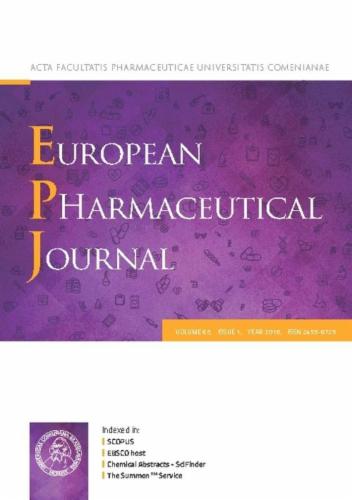小瓶质量对冷冻药品储存中相互作用、颗粒形成、容器封闭完整性和透气性的影响。
IF 4.3
3区 医学
Q1 PHARMACOLOGY & PHARMACY
引用次数: 0
摘要
生物药品的冷冻贮藏对原包装材料提出了新的挑战。由于需求的增加和标准I型玻璃小瓶的缺点,例如小瓶破裂,在过去几年中,用于特殊应用的新型小瓶已被引入市场。由于在冷冻和解冻过程中经历的尺寸变化而产生的机械应力可能会改变材料的性质,从而影响与储存在小瓶中的药品的相互作用或功能,如整体完整性。因此,我们研究了与冷冻药品制备和储存过程中所经历的热诱导机械应力相关的不同小瓶质量的适用性。首先,确定了每种瓶型的可能失效模式。从表面疏水性、表面自由能、表面粗糙度等方面考察了小瓶表面与药品的相互作用,并用激光共聚焦扫描显微镜分析了小瓶表面与药品的微观可见变化。表面疏水性、粗糙度和表面自由能的差异不影响冻融应力作用下的性能,也不随应力的变化而变化。使用光学和电子扫描显微镜结合能量色散x射线光谱学筛选来自容器的小瓶内容物中的颗粒,仅在涂覆玻璃小瓶中发现罕见的颗粒。在极端压力条件下,包括冷冻状态下的跌落测试,在包覆聚合物小瓶中也检测到少量颗粒。在容器封闭完整性测试中,没有观察到有关功能的质量问题,而未涂覆的,特别是涂覆的聚合物小瓶的透氧性略有增加。综上所述,多种小瓶类型适合于药品的冷冻保存,应根据制剂和其他产品要求进行选择。本文章由计算机程序翻译,如有差异,请以英文原文为准。

Impact of vial quality on interactions, particle formation, container closure integrity, and gas permeability for frozen drug product storage
The frozen storage of biopharmaceuticals brings new challenges to the primary packaging material. Due to an increasing demand and the downsides of standard type I glass vials, such as vial breakage, novel vial types for special applications of parenteral drug products have been introduced to the market in the past years. Mechanical stresses due to dimensional changes experienced during freezing and thawing could change the material properties, hence affecting the interaction with the drug product stored in the vial or functionality such as overall integrity. Therefore, we studied the suitability of different vial qualities related to the thermally induced mechanical stresses experienced during frozen drug product preparation and storage. First, the possible failure modes for each vial type were identified. The interaction between vial surface and drug product were investigated considering surface hydrophobicity, surface free energy and surface roughness as well as microscopically visible changes analyzed by confocal laser scanning microscopy. Differences in surface hydrophobicity, roughness and surface free energy between the vial types did not impact the performance upon freeze-thaw stress and did not change with the stress. Screening the vial content for particles originating from the container using light and electron scanning microscopy combined with energy-dispersive X-ray spectroscopy showed only rare cases of particles in coated glass vials. Under extreme stress conditions, including a drop-test in the frozen state, a low number of particles was also detected in coated polymer vials. No quality issues regarding the functionality were observed upon container closure integrity testing, while the oxygen permeability was slightly increased for uncoated and especially coated polymer vials. Overall, the results show that several vial types are appropriate for the frozen storage of drug products and selection should be based on the formulation and other product requirements.
求助全文
通过发布文献求助,成功后即可免费获取论文全文。
去求助
来源期刊
CiteScore
9.60
自引率
2.20%
发文量
248
审稿时长
50 days
期刊介绍:
The journal publishes research articles, review articles and scientific commentaries on all aspects of the pharmaceutical sciences with emphasis on conceptual novelty and scientific quality. The Editors welcome articles in this multidisciplinary field, with a focus on topics relevant for drug discovery and development.
More specifically, the Journal publishes reports on medicinal chemistry, pharmacology, drug absorption and metabolism, pharmacokinetics and pharmacodynamics, pharmaceutical and biomedical analysis, drug delivery (including gene delivery), drug targeting, pharmaceutical technology, pharmaceutical biotechnology and clinical drug evaluation. The journal will typically not give priority to manuscripts focusing primarily on organic synthesis, natural products, adaptation of analytical approaches, or discussions pertaining to drug policy making.
Scientific commentaries and review articles are generally by invitation only or by consent of the Editors. Proceedings of scientific meetings may be published as special issues or supplements to the Journal.

 求助内容:
求助内容: 应助结果提醒方式:
应助结果提醒方式:


